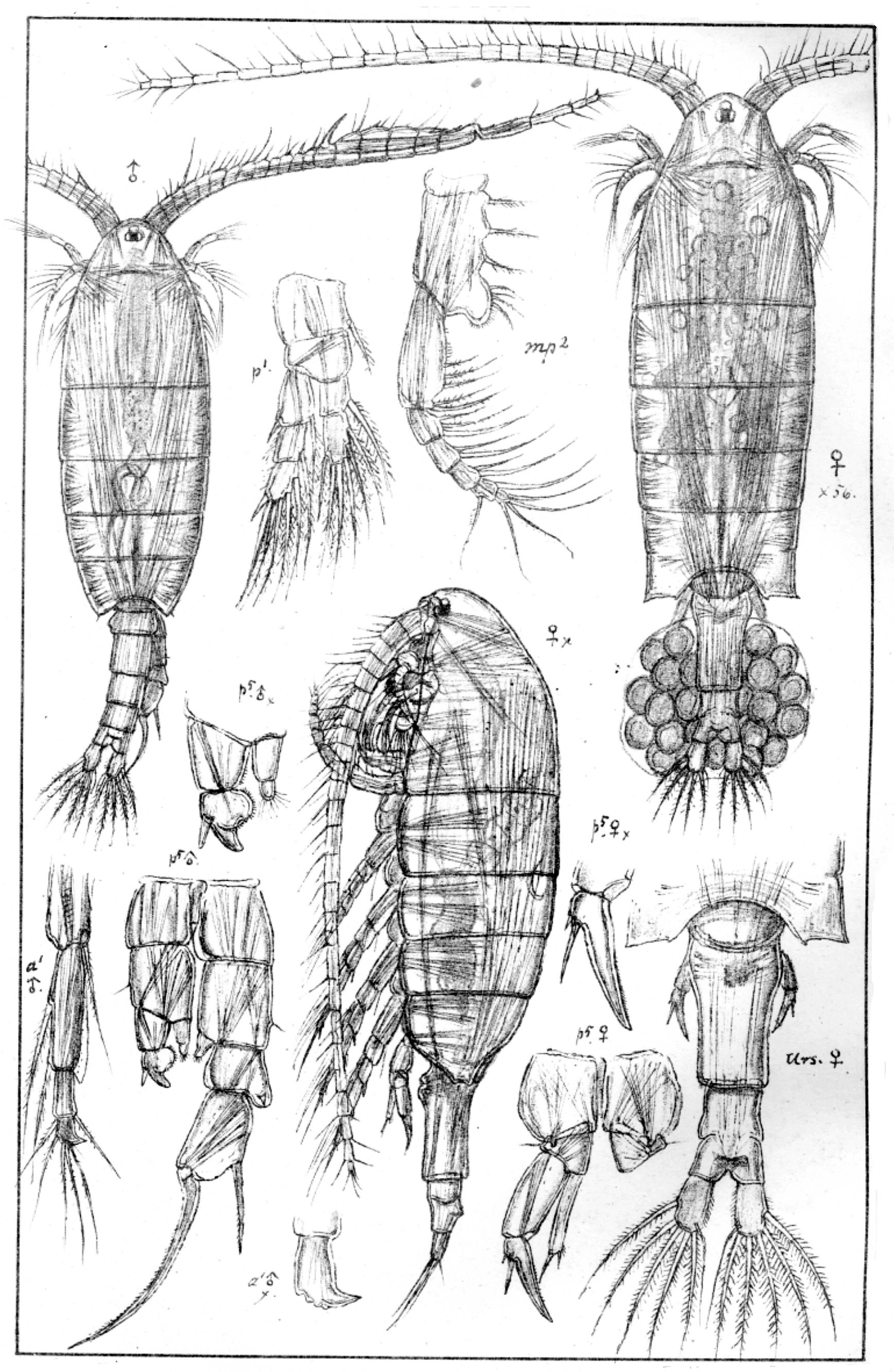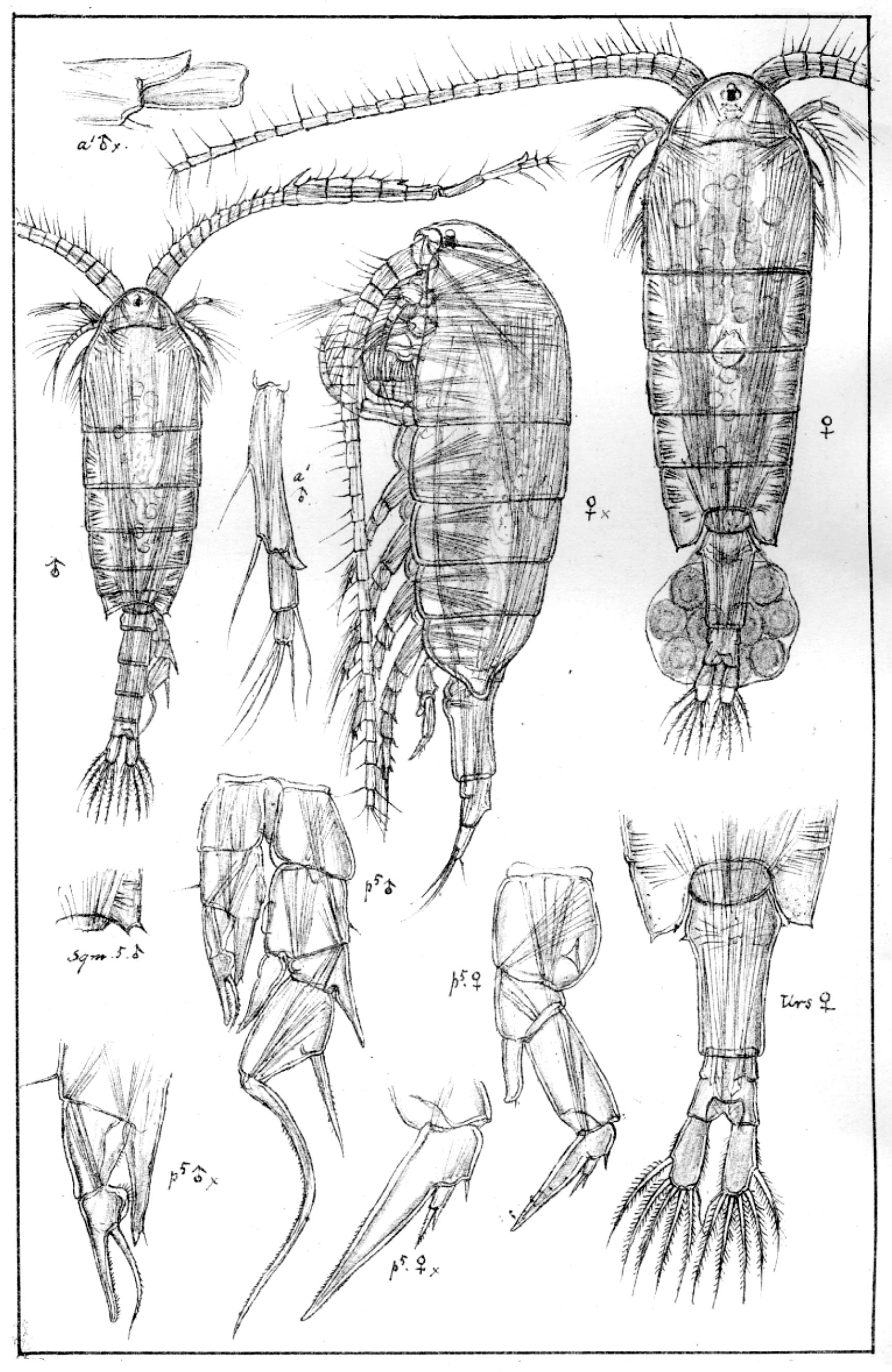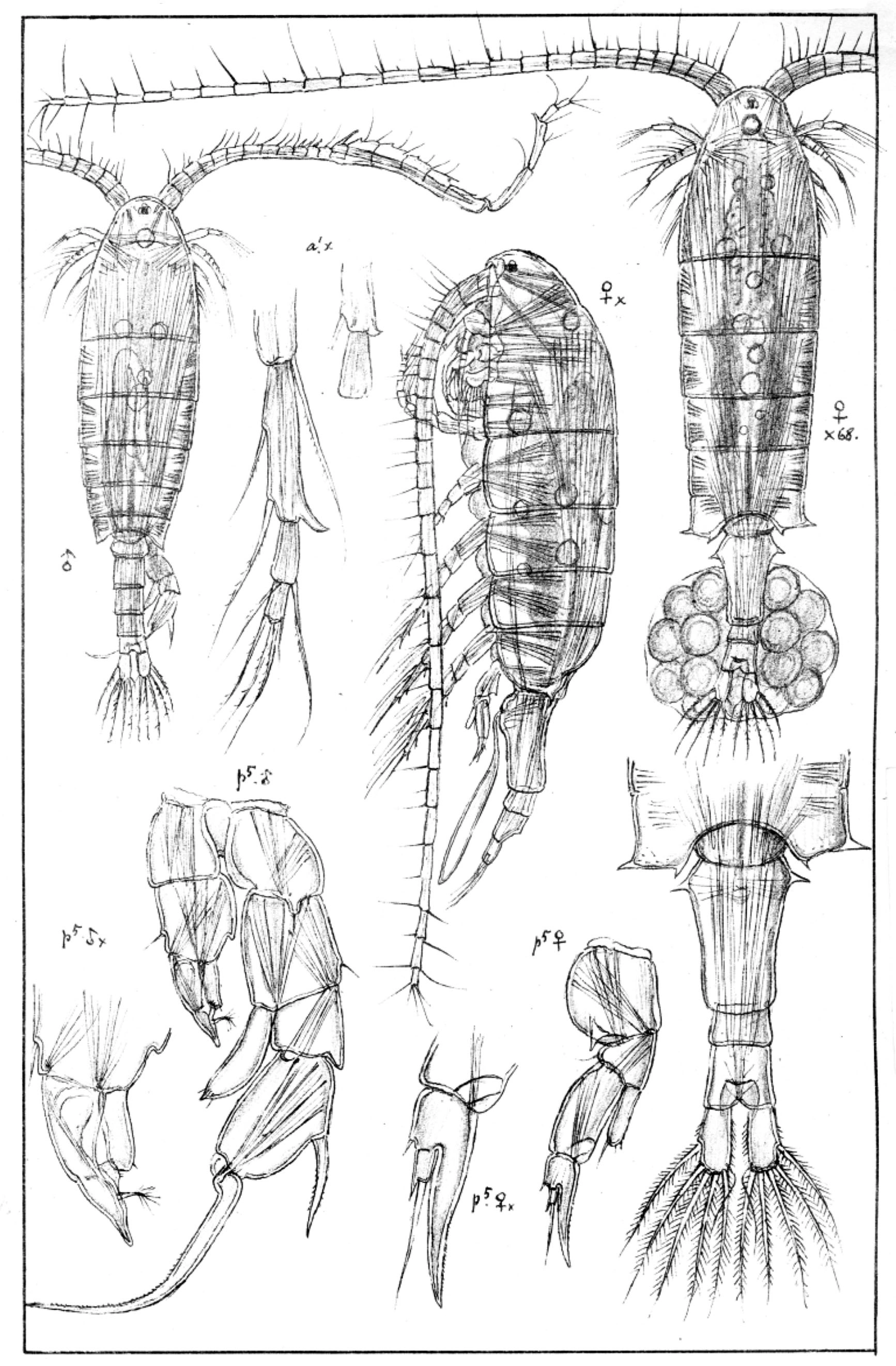Acanthodiaptomus denticornis
Acanthodiaptomus denticornis is a large calanoid copepode. It is a tolerant species found in both clearwater lakes as well as in small nutrient rich ponds. Except for the west coast, it is found elsewhere in Norway.
Key characteristics
Acanthodiaptomus denticornis (female)
Acanthodiaptomus denticornis is a large calanoid copepode but less robust than Diaptomus castor. As with Eudiaptomus gracilis, the lateral expansion of the last thorax segment forms an outer angle, although it is somewhat less prominent. The endopodite of the last leg (p5) is narrow and as long as the 1. segment of the exopodite. This character easily distinguishes A. denticornis from i.e. E. gracilis. The female of A. denticornis has generally a bluish colour, while the male is reddish orange.
Female: Length 1.5–3.0 mm
Male: Length 1.4–2.5 mm
Ecology and distribution
This species is found in 20 % of the water bodies where zooplankton is sampled. In the family Diaptomidae, only E. gracilis is more common in Norway. The species is especially common in small ponds where it occurs with high frequency (24 %). A. denticornis is not found on the westcoast and only occasionally in the furthermost north, elsewhere it is widely distributed. It is common at all altitudes below 1300 m a.s.l. The highest record is from a small lake 1396 m a.s.l. pH (4.2–9.9) and the level of electrolytes (0.5–83,8 mS/m) does not seem to affect the distribution of A. denticornis.
| Vitenskapelig navn | < 4,5 | 4,5 - 4,9 | 5,0 - 5,4 | 5,5 - 5,9 | 6,0 - 6,4 | 6,5 - 7,0 | 7,0 - 7,4 | > 7,5 |
|---|---|---|---|---|---|---|---|---|
| 15,1 | 5,5 | 18 | 7,2 | 19,7 | 23,6 | 32 | 42,7 |
| Vitenskapelig navn | < 1,0 | 1,0 - 1,4 | 1,5 - 1,9 | 2,0 - 2,9 | 3,0 - 3,9 | 4,0 - 4,9 | 5,0 - 6,9 | 7,0 - 9,9 | > 10,0 |
|---|---|---|---|---|---|---|---|---|---|
| 18,5 | 13,5 | 16,9 | 18 | 26,1 | 30,5 | 27 | 31,6 | 29,5 |
| Vitenskapelig navn | < 0,01 | 0,01 - 0,09 | 0,1 - 0,9 | 1,0 - 9,9 | 10,0 - 99 | 100 - 999 | > 1000 |
|---|---|---|---|---|---|---|---|
| 0 | 19,4 | 22,6 | 28,8 | 16,1 | 16 | 16,5 |
| Vitenskapelig navn | < 100 | 100-299 | 300-499 | 500-699 | 700-999 | >1000 |
|---|---|---|---|---|---|---|
| 22,5 | 14,6 | 24,5 | 19,9 | 22,9 | 14,8 |
Look alikes
Arctodiaptomus laticeps and Eudiaptomus gracilis


